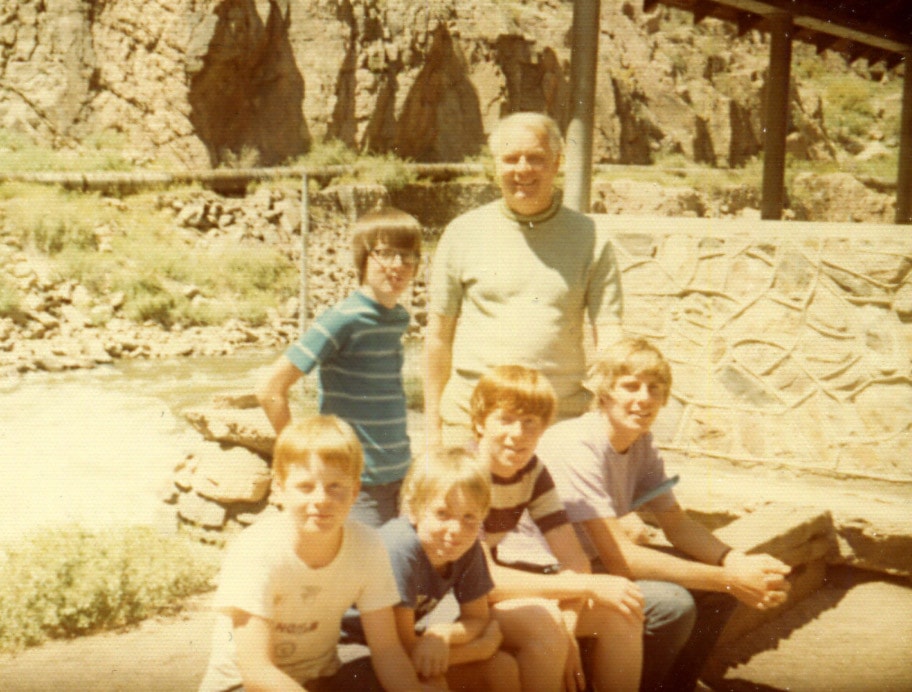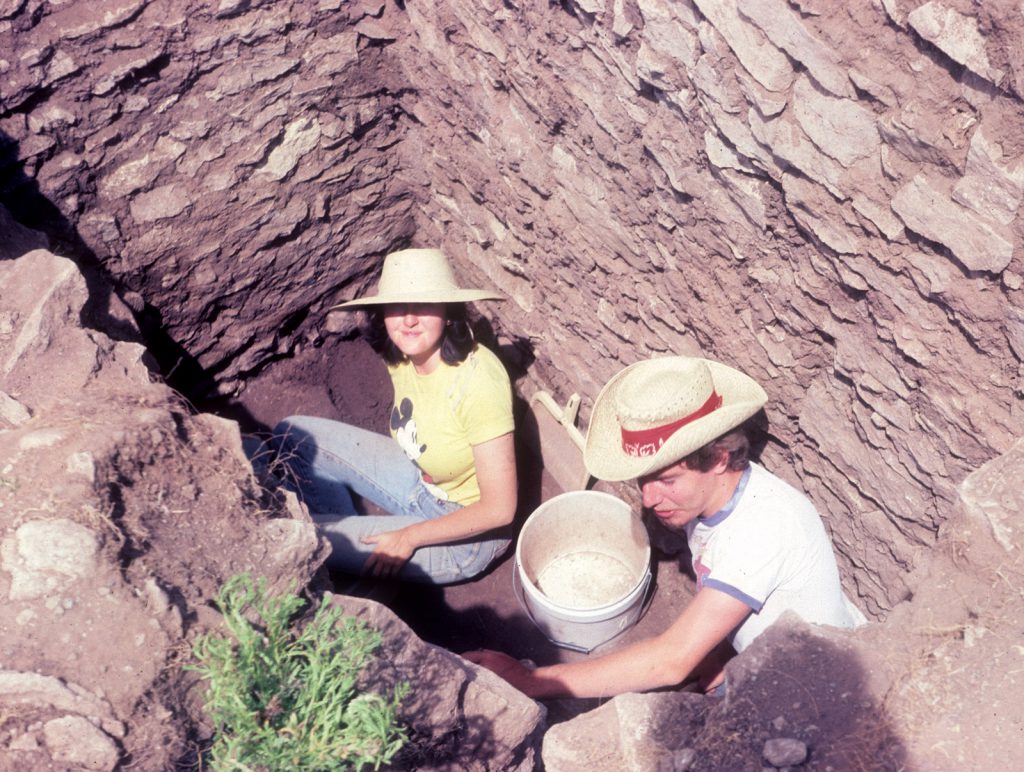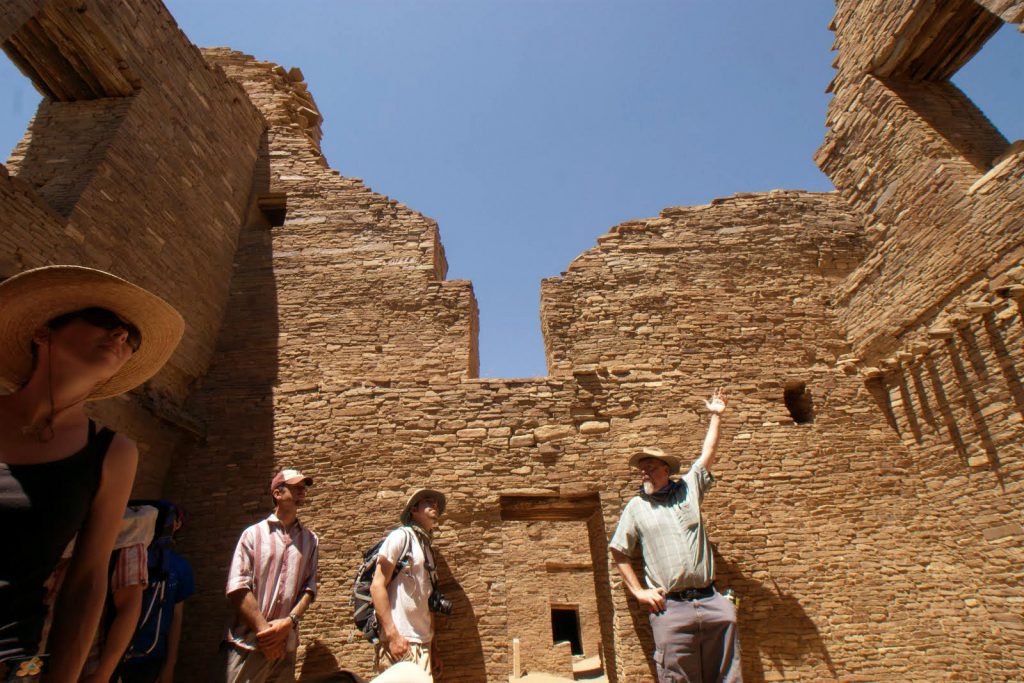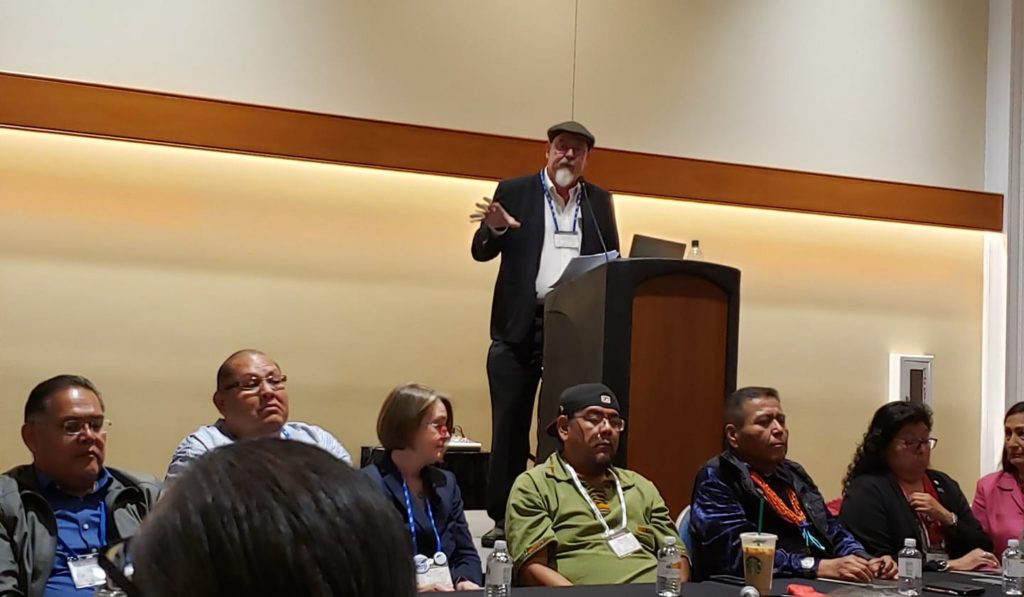- Home
- >
- Preservation Archaeology Blog
- >
- On Archaeology (My Evolution as an Archaeologist):...
Saturday, October 16, was International Archaeology Day. When we can, we like to commemorate IAD with a blog series. This year, several members of our staff are sharing how they got into archaeology, what they thought the field was, how they think about it now—and even what they think archaeology should be.
We’ll have a new post almost every Friday through the end of the year.

(November 19, 2021)—Over the last decade or so, in my work at Archaeology Southwest, I’ve been fortunate to be involved with intensive contact and consultation with New Mexico and Arizona Tribes on a number of projects. These interactions have been some of the most profound of my 30-year career, and I feel that these experiences have been transformational for me. In this essay, I’d like to highlight some of my personal evolution as an archaeologist over the last 30-plus years and briefly discuss where I see American archaeology heading.
Throughout my childhood in Denver, Colorado, I mapped onto many things ancient and many things more recent. My parents greatly enjoyed the outdoors and took me and my four brothers on frequent trips to historic sites, national parks and monuments, museums, and other areas of natural or cultural interest. I am a product of the 1980s, in many ways, and the ‘80s were my coming-of-age years. I graduated high school in 1983 and went off to college with a clear desire to study anthropology and history. I completed a Bachelor’s and Master’s in anthropology/archaeology by late 1988, and was launched into a career as a practicing archaeologist in early 1989.


I began work for Navajo Nation Archaeology Dept (NNAD), based in Farmington, New Mexico, in 1989 and continued in this job until mid-2001. I worked on and completed many projects. For several years, I did archaeological surveys in advance of the completion of Indian Health Service waterlines to homes, which was rewarding work because it helped bring water to many families. My last years with NNAD were focused on archaeological investigations prior to the construction of roads across the northern Navajo Nation. This work was time-consuming, but also very rewarding—it was gratifying at the end of the road construction process to see how happy local residents were to finally be driving, walking, riding bikes, or even horses away from the mud, dust, and snow!
During the years I worked for NNAD, the Navajo Nation was in the process of Indigenizing its approach to cultural resources management, historic preservation, and archaeology (see Marek-Martinez 2016 for a comprehensive discussion of this process). Academic programs in archaeology in the 1980s rarely, if ever, included Indigenous perspectives on issues. So, it is fair to say that I had a lot to learn in this realm as a young archaeologist. My time at NNAD, working with many thoughtful and knowledgeable Navajo tribal members and consultants, as well as other colleagues, greatly advanced my learning of and sensitivity to Native values. My NNAD colleagues and I in the roads archaeology program produced quite a few publications on the Pueblo and Navajo archaeology of the Navajo Reservation, and I believe we made a contribution to knowledge.
In 2001, as work with NNAD wound down, I was fortunate to be hired by Bill Doelle, President of Archaeology Southwest (then known as the Center for Desert Archaeology) to complete the archaeological research begun by Harvard-trained Cynthia Irwin-Williams, along with her colleagues and students at Salmon Pueblo. I engaged many of the original 1970s Salmon staff and scholars on the project for the new effort, including Salmon Executive Director Larry Baker, and also recruited new researchers to complete additional studies. The result was the 2006 three-volume set entitled: Thirty-Five Years of Archaeological Research at Salmon Ruins, New Mexico.
Despite the joy of helping to finish the archaeological research at the Chacoan outlier at Salmon, a large shortcoming of the work was the lack of involvement of Indigenous scholars and discussions with Pueblo descendant communities. To be fair, few archaeological endeavors were actively involving Native descendants 15 to 20 years ago. Nonetheless, if I were to do it all over again, engagement and involvement of Indigenous descendant communities would be a large component of the project.

Twenty years later, I’m still happily engaged with archaeological and advocacy work for Archaeology Southwest. I am particularly encouraged because of the recent changes in archaeological approaches undertaken by my Archaeology Southwest colleagues and the ongoing modification of our primary goals as an organization (stay tuned!). One of the key components of the transition that Archaeology Southwest is making relates to a stronger commitment to more actively advocating for the protection of sites and landscapes across the Southwest and to involve Indigenous descendant communities at the beginning and at every level of future projects we undertake.
The transformation I have personally experienced is revealed by a few specific examples of recent engagement with Indigenous descendant communities.
In 2018, I went out with a team of Pueblo of Acoma cultural specialists and elders to visit important sites and places across the Greater Chaco Landscape. The primary goals were 1) to help Acoma tribal members reconnect with one of their ancestral landscapes, and 2) to identify sites and landscapes of cultural and preservation concern to the Pueblo of Acoma so that we could then advise Bureau of Land Management and Bureau of Indian Affairs personnel as they complete a planning process and decide where to allow future oil-gas leasing.
The report on our work is under review by the Pueblo of Acoma and I am not able to discuss specific findings. Nonetheless, my concern here is not with these specifics, which will be of great significance later in the planning process. Instead, I want to express the deep feelings I experienced as Acoma folks reconnected to ancestral places across Greater Chaco in the week that we spent on the landscape. My eyes were opened to a much broader range of sites and landscapes that were important to team members. Without being too revealing, I was truly moved to see how and hear how much it meant to be back on ancestral sites and landscapes. I also realized the great depth of connection to land and landscapes that is an intrinsic part of the daily experience of most Indigenous people, but which is largely absent from the lives of most of us in the non-Indigenous world.
My second example is the recent Native American Graves Protection and Repatriation Act (NAGPRA) repatriation process that Salmon Ruins Museum, near Bloomfield, New Mexico, has undertaken and in which I had played a role. Earlier this year, many Indigenous ancestors and associated funerary items from Salmon Ruins Museum were reburied through a ceremonial event conducted by the Hopi Tribe and including other Pueblo descendant groups. The NAGPRA law is among the most important pieces of civil rights legislation for American Indian Tribes in the United States, and although it has limitations and flaws—with some regulatory changes under consideration currently—it has been an effective tool to repatriate Indigenous ancestors who have languished for decades in museum collections and return them to the earth and their journeys. My role in the reburial process was minor, but I was gratified to be part of the deeply moving and healing event. As the work finished, a small rain shower sprinkled the area and was seen as a blessing.
My third example relates to my participation as a member of the Society for American Archaeology (SAA) for more than 30 years. Over that time, I have organized symposia and given many presentations focused on the archaeology of different locales around the American Southwest. In 2019, my friend and colleague Ruth Van Dyke and I organized an SAA Presidential forum in which Native American panel members discussed their views on protecting the Greater Chaco Landscape. Our session was kicked off by then-Congresswoman Deb Haaland, who has since been appointed Secretary of the Interior by President Biden. During the forum, we heard from Pueblo and Navajo cultural leaders on the importance of the sacred landscapes of Chaco Canyon and the surrounding Greater Chaco Landscape. Listening to the concerns of the panel, I was touched by the deep reverence expressed regarding the ancestral Chacoan landscape and the serious concerns for the irreparable damage that has been inflicted by unrestrained oil-gas development over the last 50 years.

Prior to 2019, I had not organized a session with a primary focus on Indigenous perspectives. The 2019 SAA meetings were held in the city of Albuquerque, New Mexico, which allowed for the greatest level of participation by Indigenous Tribal members in the SAA’s history. I believe we will see more and more SAA sessions and other archaeological conferences with significant Indigenous participation and focus on their areas of concern.
With the time I have spent working with different Indigenous groups during my tenure as an archaeologist, and in particular, over the past decade of advocating for protection of the Greater Chaco Landscape, I feel strongly that significantly greater engagement with and involvement of descendant groups is American archaeology’s future. The reluctance and concern felt by some archaeologists to be an active part of this process would, I believe, vanish if they were given and would embrace the opportunity to spend more time with Native peoples. It is true that much of the interaction between archaeologists and Tribes is formal and structured by different rules of consultation and interaction, which can be a barrier to true connection and understanding. But getting beyond the constraints of these types of interactions and, especially, going into the field with Indigenous people would, in my view, open the eyes of archaeologists to cultural resources they may not be seeing and make clear the value of collaborating with Tribal groups who see the world very differently.
To those who would say that archaeology is and should be practiced as a detached, objective science, I would say this approach does not exist and never has. I feel strongly that while the pursuit of objectivity is admirable, the reality is that it is rarely achievable. I know that many archaeologists sincerely try to be objective as they approach their research. But the reality is that most American archaeologists are totally immersed in a Western, positivist tradition that does not recognize or give priority to alternative world views, such as those of Indigenous descendant communities. This approach, then, is biased toward Western, positivist ways of interpretation and produces biased narratives of the past. Because of these inherent biases, we cannot describe most current archaeological practices as objective endeavors. If we accept this as true, then our only path forward is to acknowledge that our practice of archaeology is subjective, even if we archaeologists work hard to be scientific.
As we consider our path forward as a discipline, we must realize the limitations of our positivist, biased approaches. This has been the approach of American archaeology for decades, and it is no longer tenable. We must also realize that, if we fail to fully engage and involve descendant communities in our work, we are missing at least half of the story. We are excluding people from involvement in understanding their own ancestry and heritage and from having the primary role in telling their own history—their own stories.
We archaeologists know where we need to go, and it is high time we go there! I am proud to be part of Archaeology Southwest, an organization that is actively leading us into a future of much closer coordination and true collaboration with the many descendant communities whose heritage we have studied for centuries. It is time we set aside old approaches that excluded these groups and communities and rebuild and reset a process that allows access to all. I am optimistic that we will do this.
Reference
Marek-Martinez, Ora
2016 Archaeology For, By, and With the Navajo People- the Nihook’aa Dine’e’ Bila’ Ashdlaa’ii Way. Unpublished doctoral dissertation, Dept. of Anthropology, University of California, Berkeley.
2 thoughts on “On Archaeology (My Evolution as an Archaeologist): Paul F. Reed”
Comments are closed.
Paul, that is a wonderful post, and your concept of the change required is spot on. Thanks for your perspective on this process. Even more great full for your hard work on preserving the Chacoan landscape. If we could get congress to make it a law and not just an executive order it would be better, but I am thrilled by the result.
Yes, couldn’t agree with you more.